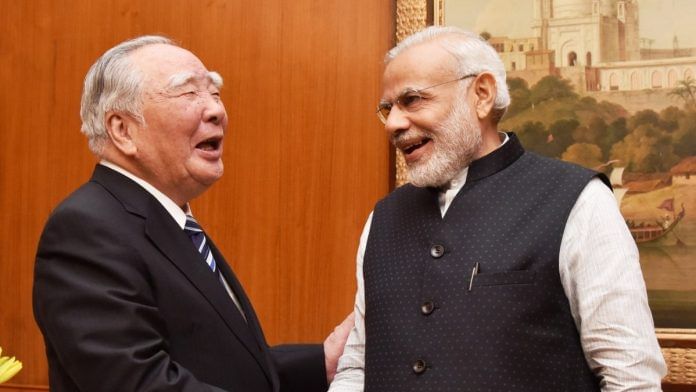


On Christmas Day, Osamu Suzuki, the 94-year-old former chairman of the eponymous automotive firm, passed away. Annually, nearly two million cars and half a million two-wheelers wearing the Suzuki ‘S’ badge hit Indian roads. The runaway success of these cars made Suzuki a household name in India and beyond. It also made Osamu Suzuki a very rich man.
Maruti-Suzuki’s market capitalisation on Friday climbed to Rs 3.76 lakh crore (almost $44 billion), over double that of its parent company. In fact, minus India, one can safely assume that Suzuki Motor Corporation might not have survived as an independent automaker. So, it suffices to say that Osamu Suzuki’s bet on India back in 1980 truly hit the jackpot. And India shared the spoils.
Suzuki took a gamble on India when much bigger names would not. He made that bet knowing full well he’d have to work under the Government of India as a public sector firm, with Indian bureaucrats at the helm. But with former IAS officers like RC Bhargava and Jagdish Khattar, he made it work. Even later—despite his age and frailty, confined to a wheelchair—he continued to visit India regularly, making a beeline to central Delhi to meet the high and mighty
In fact, as Prime Minister Narendra Modi posted on X, the two men shared a long relationship, especially with Suzuki’s investments in Gujarat when Modi was Chief Minister of the western state.
Suzuki’s bet on India also turbocharged the rise of Gurgaon. The Maruti factory, once surrounded by mustard fields, today lies in the middle of an urban agglomeration where apartments sell for a hundred crore rupees. Maruti-Suzuki effectively created the Indian automotive components space, with suppliers up and down the Delhi-Jaipur highway, many of whom have now become global firms.
But he did something else as well. The Maruti-Suzuki 800 changed Indian motoring forever. Indian motorists, long used to 1950s European technology, were suddenly exposed to reliable, affordable, and economical Japanese motoring.
As a child growing up in Delhi in the late 1980s and 1990s, every family who could afford it had a Maruti. Our first one was a Maruti van, which soon became a Gypsy. I learned to drive in that van and later snuck out in my mother’s 800. The first car I owned was a 2002 Alto LXi.
Also Read: The ‘new car’ of the future isn’t from a showroom—it’s your old one updated like an iPhone
Outside my house today, a fourth-generation Maruti-Suzuki Dzire is parked. It’s a symbol of just how important India has become to the Japanese carmaker. The Dzire was developed specifically for India, and the current model is packed with modern conveniences such as wireless smartphone connectivity, charging, and even a sunroof. But it retains those Maruti basics that made Osamu Suzuki’s first cars in India such a success. It remains affordable and economical to drive. And also, fun to drive.
There’s a reason many automotive writers of my generation have a soft spot for Maruti cars. It’s not just because we snuck out in them to visit our girlfriends as teenagers—they were fun to drive. Sure, I can’t condone a handbrake turn or the heel-and-toe pedal operation, but I know how to do them, thanks to learning on the 800 and the Alto.
As for Suzuki Motor Corporation, I do not know if it will remain an independent company. The recent announcement by Honda, Nissan, and Mitsubishi that they were considering a merger to become larger and stave off competition, hints at what may be inevitable. Suzuki seems almost certain to be subsumed into Toyota. The two companies already have a strong relationship, evident in their product-sharing agreement—with Suzuki using Toyota’s hybrid technology and Toyota preparing to sell its version of Maruti-Suzuki’s eVitara, which is to be unveiled at the Bharat Mobility Global Expo on 17 January.
Of course, this is just speculation on my part. But the rising costs of automotive development, with newer drivetrains and advanced software technologies, mean that being a smaller carmaker—even one that sells nearly two million cars annually in India—is increasingly unsustainable. It will be interesting to see how the industry consolidates in the coming months and years. Maybe nothing was to be announced officially as long as Osamu Suzuki was alive.
But to end, thank you for the cars, Mr Suzuki. Thank you for believing in India.
@kushanmitra is an automotive journalist based in New Delhi. Views are personal.
(Edited by Asavari Singh)



